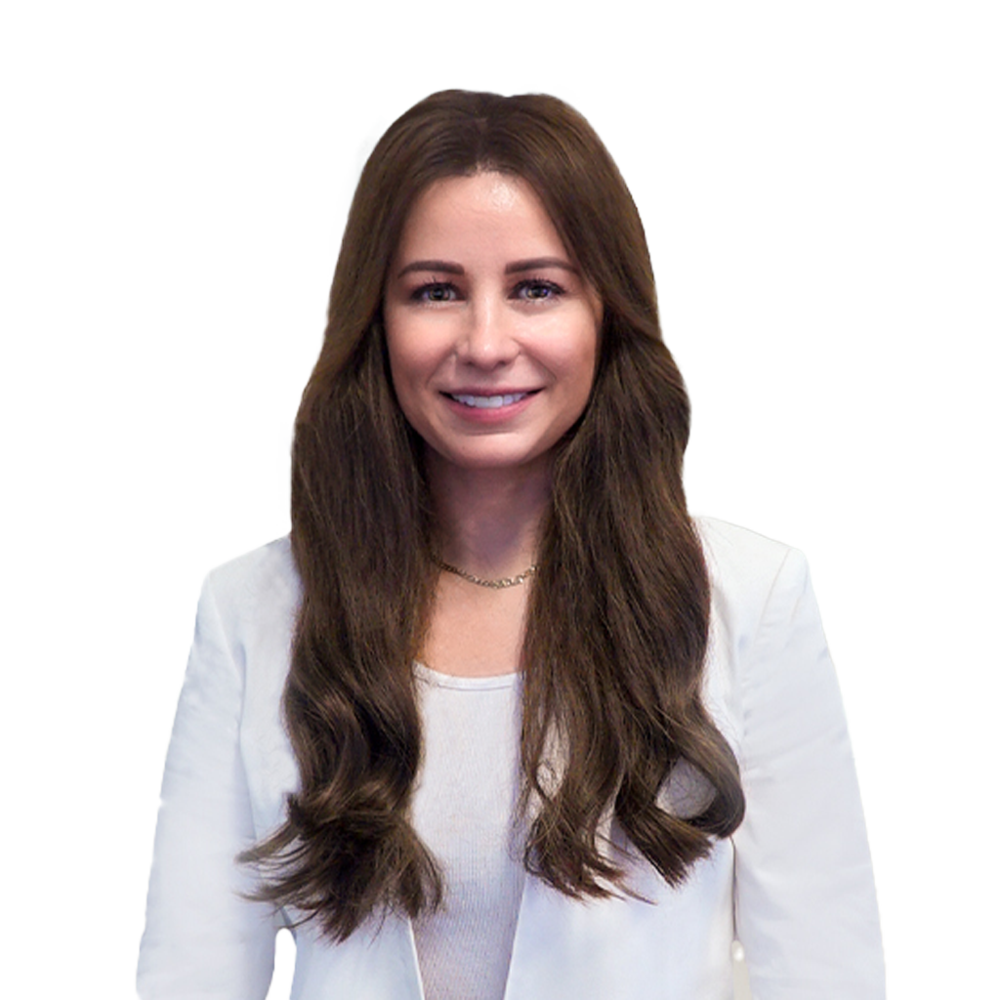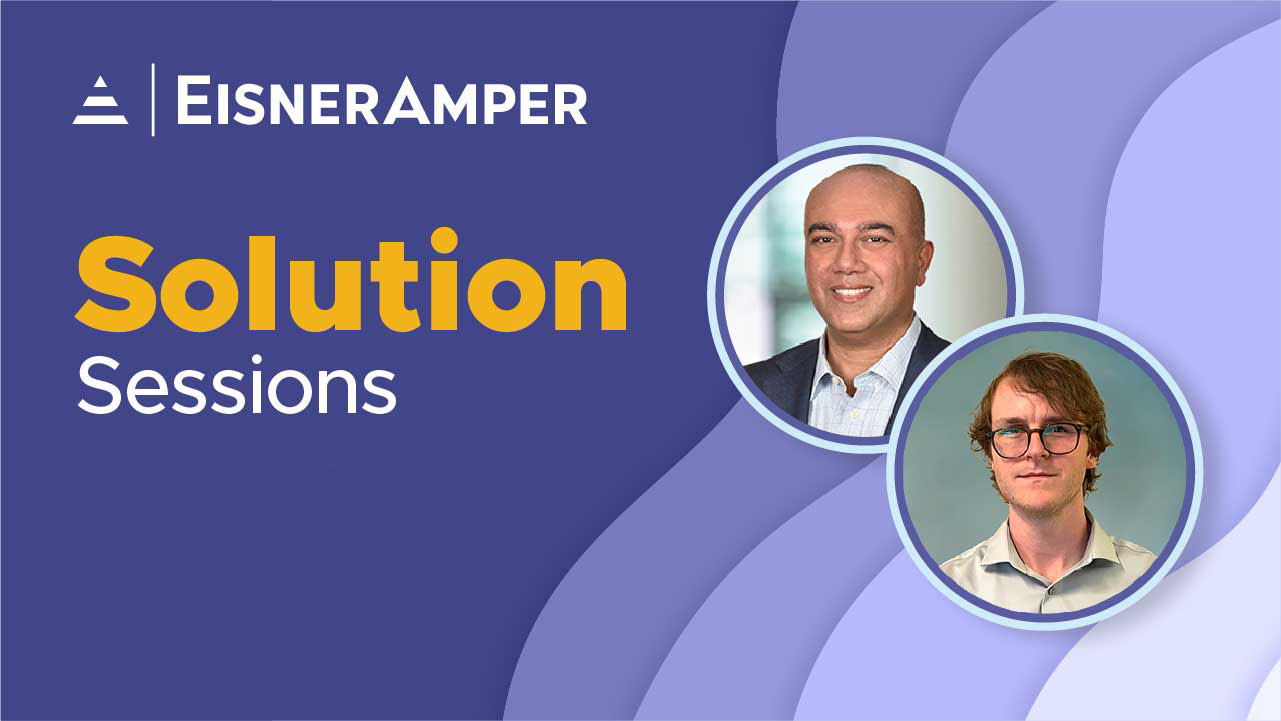
Fireside Chat with ILPA | LP Perspectives in the Current Environment
- Published
- Aug 15, 2023
- Share
EisnerAmper is pleased to have hosted a fireside chat with Greg Durst, Managing Director for the Institutional Limited Partners Association (ILPA), which represents more than 600 LP institutions. Over two decades, ILPA has grown its membership to a network of 7,000 professionals representing more than 50 countries. Together with its members and partners, ILPA is dedicated to continually working toward greater transparency, governance and alignment across the industry.
Today’s LP community is discussing a host of hot topics that impact GPs. Throughout the discussion, attendees learned:
- Effective approaches to fundraising today
- Important negotiation terms
- Operational considerations
- LP thoughts on ESG and DEI
- ILPA’s new Continuation Funds Guidance for LPs and GPs
Transcript
Kayla Konovitch:Thank you Bella. Hi everyone. I'm Kayla Konovitch, a Tax Partner with Financial Services Tax Practice. I specialize in working with private equity funds, venture capital funds and family offices. So I'm going to moderate today's Fireside Chat with Greg Durst from ILPA, to hear about LP perspectives in the current environment. I want to introduce Greg as the Managing Director of Corporate Development and Engagement for ILPA. Greg leads ILPA's efforts to bring together the general partner and service provider communities with ILPA's 600 plus limited partner members on a global basis. This includes working with all three communities on industry critical issues, thought leadership and event participation. He works with these communities together with other ILPA leaders and members on high impact conversations around industry trends, regulation and sustainability. As part of his global responsibilities, he'll be relocating to Europe in the fall to spearhead the launch of ILPA's first non-North American office in London.
Prior to joining ILPA, Greg was the Founding COO and Head of Investor Relations for a global macro hedge fund in New York. Greg has brought experience in private equity as a GP, a service provider and financier to leading players in the industry, including with Bain & Company's private equity practice. In addition to his work in private equity and professional services, Greg has lived and worked in North America, Europe, and Southern Africa and has extensive experience working in South Asia. Greg has an undergraduate degree in finance from Georgetown University and an MBA from Harvard Business School. Greg, wow, you have a very impressive background.
Greg Durst:Thank you. That's very humbling for you to say and I appreciate that. Before we kick off, please allow me to say thank you to EisnerAmper for asking me on behalf of ILPA and our members to participate here. This is a really important partnership for us and has been a feature of my seven years here at ILPA and I just want to shout out some of the folks that have been really instrumental to that. With Peter Arena, now with yourself, Kayla, Simcha David has contributed to some of our content. But I would be remiss if I didn't call out Lauren Braun in particular who's been a really long-term supporter of ours and has been such a critical piece of maintaining the relationship and making sure that the trains run on time for both organizations. So a huge thank you for EisnerAmper for the opportunity to be here today.
Kayla Konovitch:You're welcome. Thank you. So I know the audience is anxiously waiting to hear from you and from the LP community. So just a little bit of background. We know based on reports that the deal values are down about 45%. Exits are down nearly 30% and the fundraising is on track to drop about 30% by year-end. We've had a very long year. There's been a lot going on, inflation, rising interest rates and the banking crisis. Ultimately, the limited partners, they're really looking for liquidity and they're looking for the GPs to really move the industry along. So Greg, with all this that's going on, what could you tell us is the primary hot topic and the main challenges that LPs are facing today?
Greg Durst:Well, I think it has to be liquidity because it has so many different spinoff impacts. It has allowed LPs to really make a very important assessment of their portfolios and how they're interacting with the general partners. And so that's an area we're going to come back to in a number of the conversation points going forward. But liquidity is foundational, but I would also say that LPs are also keeping their eye on the ball in the long-term impacts of their portfolio, whether that's sustainability, the regulation with the SEC. And in some degrees with Brussels, they're also looking at some of the things that change the interactions between LPs and GPs, particularly around maintaining and preserving alignment, transparency and good governance. And on those I would say we've had many, many conversations around the use of continuation vehicles, and when done well, I think they're a winner.
When done poorly, I've never seen LPs more angry. I think that LPs are also thinking about things like NAV facilities, which as whole periods are increasing, GPs are looking for more liquidity solutions. And the terms like continuation vehicles, when done well, I think people are comfortable with the alignment. When there's not a lot of transparency, it's very hard for LPs. And then I think also it's important to say that and to set the expectation for this conversation, the terms are really, really important part. Fees and terms, but I think terms in particular are one area where LPs are feeling their oats and feeling like they have an opportunity to change some conversations that I think where the pendulum has swung too far in the GPs favor, and that's very important for our members. And so let me say this, with the fundraising challenges, we've seen LPs reduce their overall commitments for this year and I think it's going to continue into next year.
I see them or we see them reducing the number of GPs that they're dealing with. They're narrowing the number of GPs that they're working with. They're pushing back hard on fees and terms and they're doing that without fear of retribution. And I'm specific about that word because I think in the salad days of 2020 and 2021, if an LP would've said to a general partner, we're going to skip this vintage or we're going to reduce our commitments, I think GPs to their detriment said, if you're not in here, we're not calling you again. Which as a former IR professional I think is really a difficult message when, particularly now when you really need your limited partners. I think as LPs, we're seeing more grace from the GPs as in, Hey, if you're not in this year, would you consider it next year? If you're not in this vintage, would you consider our next one? Hey, we know you're interested in private credit, we've got this interesting private credit arm.
So there's a little more emphasis from the general partners on the quality and caliber of those relationships and frankly the professionals that they have leading those relationships as well as response to the challenging fundraising environment. So there's a lot in there and there's a lot we can talk about, Kayla.
Kayla Konovitch:Yeah, there was many challenges that you mentioned. So it seems that, I mean, fundraising is definitely top of mind. Well, probably in both sides, the GP and the LPs are concerned. The LPs with liquidity and the GPs trying to raise their next fund, which it's harder to do right now in today's environment.
Greg Durst:Let me add some color to that on that particular point. So Bain & Company just released their midyear PE review and 14,000 funds in the private markets universe. So that's across the spectrum VC, PE, growth, hedge, real estate, infra. 14,000 funds are looking to raise three trillion dollars of capital and they've analyzed the LP appetite and show one trillion of capacity. So that is a significant mismatch between what GPs would like to raise and what LPs are willing to put forward. So use that. If you think about it, it's $3 chasing one. Boy, there's going to be some interesting dynamics there.
Kayla Konovitch:Right, right. What would you say specifically with fundraising for a fund one launch, somebody who's just coming in now with a fund one?
Greg Durst:Yeah, this is the part honestly that breaks my heart. We are going to see some very high quality, high potential teams that are in market that are going to have to push out their fundraising windows, not months but years. And I think the stats were that, I don't think we ever got first time funds down to under a year in a launch with a few very narrow exceptions to that. But I would expect that fundraising for those first time, we all like to play around with what is a first time. Most of the time, a first time fund is what I call the F cubed round. The friends, fools and family of folks that are just putting money in to get somebody launched because they know it's a good team. A proper Roman numeral one fund now I think is really going to struggle. That being said, if I might, and I've worked with EisnerAmper on our emerging manager showcase, and let me just share some of the consistent themes that we talk about.
One is you want to have a really good team where you have gaps, whether that's in we want to have a COO or we want to have more deal professionals. Being able to highlight where you are and where you would like to be on that team is really important. Second I would say, it's also very important to create the impression that you're building an institution as opposed to a one and done. And when I say that, part of that communication is around the management team's experience and hopefully their experience together, their track record, but also their commitment. And that commitment comes in the form of things like GP commit, but it also comes in the form of how much folks, individual net worth is being committed to the fund and real dollars put in there. And with the difficult fundraising, a commitment that shows capital that is going to keep the team together for the folks that are not putting in equity, keep the team together for what could be a longer duration of a fundraise.
The last thing I might add on this is that for these early managers, it is more important to find LPs that are with you for the long term. And the phrase that I use is find a bell cow, find a limited partner that others will follow. In venture, it's harder to get a stronger endorsement than Yale, for example, but find other LPs, and they're out there, especially depending on the space that you're operating in, where others will go, wow, that's an interesting addition to that. And whether or not that bell cow catalyzes the fundraise to close for first fund or first to a first close, use that bell cow and others to warehouse deals, to fund deals almost as an independent sponsor and think about that as a legitimate strategy. No one's going to penalize you for acting as an independent sponsor as opposed to a rocket ship first fundraise, which is I just don't think the appetite is there today. It's hard. It's really hard for LPs to underwrite first time managers and this fundraising market is making it even more challenging.
Kayla Konovitch:Absolutely, Greg. On point, we see this a lot. We have an emerging manager platform like you know and we have many fund managers coming in, launching a fund one, but there's many people that they're starting with the SPVs, doing one deal at a time, multi series LLC or some other structure until they launch that first fund. It's getting drawn out so it's taking longer, but we hope they will continue and persevere. It definitely is not easy right now. So we do see that. I'm going to move to the next polling question. Let me see here. Actually, I'm not sure it went on my screen. Bella, do you want to read the next polling question? I believe it's up.
Bella Brickle:Poll #2
Greg Durst:I can see them, so I'm happy to give a bit of the feedback. It's so far about 60% have said fundraising, and this is a pick two, so it's not necessarily going to add up to a hundred percent, but fundraising top of the pops, valuation's important. Coming up on the bottom is sustainability. Not according to your limited partners, but we understand the audience may not skew as many limited partners, which is an opportunity, right? For those that are focused that have a clear set of plans and objectives around sustainability, that can be part of the differentiator.
Kayla Konovitch:We'll definitely talk about that shortly. We'll get into that.
Greg Durst:Yeah. So yeah, fundraising, clear by leaps and bounds the most important.
Kayla Konovitch:Okay. All right. So Greg, how would you describe the state of the relationship right now between the LPs and the GPs? What's it like right now?
Greg Durst:I think it's very important to note that it depends on which segments we're talking about and both for the GPs and for the LPs. I think we talked a little bit about the emerging manager space. If you've got a good relationship with an LP, I think LPs appreciate how challenging it is and really do want to be viewed as a partner. If I were to encourage GPs, I would say to build that partnership, you want to start with transparency. If an LP is saying push back on management fees for example, I would offer budgets and say, look, we're trying to build a firm here and it costs real money to have, and this talent environment costs real money to build a team. So you may have different ways to share some of those economics with early allocators or early investors of an early manager. When it comes to some of the more mid-tier funds, and I mean that by AUM.
I think the relationship there is, it's going to be pretty challenging. It's going to be pretty challenging because I think they're going to bear the brunt of the rationalization that we're seeing from limited partners. And they're in some instances, neither fish nor fowl, they're not big enough necessarily to be true industry leaders and standouts and they are too big to be highly, highly niche in their strategies. I think where those mid-tier firms can speak to is in the quality of their processes both in deal sourcing, but in terms of also how they manage portfolio companies. Because I think with the challenge of liquidity is really because there's not a lot of exits. So if they've got a good process in how they're managing their portfolio companies and creating true value and improvements in margins and growth, I think that's really going to be a differentiator.
For the largest funds, interestingly enough, we are already seeing, even in the press, we're seeing a lot of pushback from LPs on management fees and we're seeing those start to tick down. To quote one of our LPs, "It is very difficult to say with a straight face that it costs 2% to manage a 10 billion dollar fund, especially when you've just raised an eight billion dollar fund two years ago."
Kayla Konovitch:Right.
Greg Durst:The LPs are wise to the layering-
Kayla Konovitch:You have to justify it. Right. And what specifically would you say is the push and pull with the fiduciary duties, like the way the LPs versus GPs look at that?
Greg Durst:Well, look, fiduciary duty is a really, really important point to LPs today and it is probably of the terms that they are listening for and watching is probably one of the most sensitive. So what do I know about general partners? They want to maximize their returns, they want to reduce their risk, they want to show how they're comparing against their peers and they want to raise another fund. Those are the four things I know about every GP. And in that reduce the risk over the last five to six years with the support of GP counsel, the fiduciary duty terms have been watered down and have been squirreled away in different elements. It'll be very difficult for an LP to go find in an LPA, here's the fiduciary duty clause. It's going to be in different elements within the LPA, elements of the side letter. And the reality is that it's an easy win for GPs to demonstrate alignment. The vast, vast, vast majority of limited partners are fiduciaries of the capital that they look after, right?
In particular, when you think about the large public pension plans, there's no question they are fiduciaries and everything they come back to is tested against that fiduciary standard. And they ask, and I think it's really important to understand why the GP would act in any way that isn't a fiduciary on behalf of the funds. And the reality is, and to a degree we're seeing it tested in the Delaware courts, that fiduciary duty is being diluted. And I think in today's fundraising environment, when you are trying to make the case that you as a GP want to be a partner, your fiduciary standards should be above reproach. And that's really, really important to LPs right now and make an LPs work because hey, this is how we have it in the last fund or last fund docs, push back on your GP council and say, look, this is important to LPs. That fiduciary standard is critical. We all act, and I can't tell you how many GPs say, we act as fiduciaries. Great. Make it clear, put it in your docs.
Kayla Konovitch:You're passionate about this.
Greg Durst:We stand on a little bit of a soapbox on this one because it's a big deal for our members. And I think it's hard to understand a case where a GP can say, well, but in this case, kind of maybe fiduciary.
Kayla Konovitch:Right. So what would you suggest then that the GPs can do to bring the GPs and LPs, make them more aligned, right? Because clearly there's differences that they have and they want to minimize their fiduciary duties and they want to maximize. What can they do that can help narrow the gap and get them both in line, both parties?
Greg Durst:Well, on the fiduciary, I think it's being clear and transparent about where those are. Another area, and we've seen this in the setups around continuation vehicles for example, where there was a push to pre-clear conflicts. And I'll again, to quote another senior ILPA board member, there's no such thing as pre-clearing of conflicts. That's what LPACs are for. And so even if you have the ability to quote pre-clear conflicts in your LPA, don't. Bring it to the LPAC. The LPACs are there for a reason, they're there to adjudicate those conflicts. And candidly, you're going to get some great feedback. You may not get unanimity from an LPAC, but it's a fantastic way to get the feedback on what's critically important to those LPs. That's where I would start.
Kayla Konovitch:Okay. So actually Bella, do you want to push to the next polling question?
Bella Brickle:Poll #3
Kayla Konovitch:I'm curious, Greg, what are you seeing? Speaking to LPs, where do you think they're deploying capital the most?
Greg Durst:Well, I will tell you they're responding on the private credit, private debt space because that's what GPs are putting in front of them. In addition, especially those that have more mature platforms. And here's what I would say to that. The research is pretty compelling both from Hamilton Lane's PE report out in Q1 this year and some of the work that we've seen from Steve Kaplan, that the returns in that private credit space are healthy and resilient and that makes a lot of sense to limited partners. There's a particular angle here that makes those returns quite resilient. And that is because so many of the private credit offerings are sponsor led, i.e. their office sponsor platform. And there's quite a bit of sponsor to sponsor conversations on difficult credits where one sponsor will say to another, Hey, I know I've got a problem here, it's money good. Don't call your loan if we can make it happen.
And so there's almost a tacit agreement amongst a lot of GPs that we'll take care of these troubled names and we'll get you on the next one. That's one thing that actually Kaplan in particular mentioned. I will say however, that LPs are very aware that a lot of the teams that are deploying that capital today are relatively new to the space. And even though terms have come back with a vengeance. We used to see Covenant-lite and very, very, very few triggers for defaults. We know that the terms have bounced back quite significantly in favor of the credit providers. The individuals that are managing those names and those portfolios are in general relatively new and may not have lived through a GFC for example.
Not to toot my own horn or 30 plus years of experience here. This is my fourth major credit cycle that I've seen and I'm unusual in that respect. If folks are thinking about having a private credit offer or are negotiating debt, you do want to be with folks that have some experience because they're not going to panic if the underlying performance isn't great. But you also as LPs want to make sure that the team managing has some experience in the macro sense, but also potentially in some of the more troubled names because there will be troubled names. There's no question. Liquidity has kept a lot of companies kicking along, if not, overperforming. And as that liquidity dries up, as Buffett says, "You'll see who is swimming naked."
Kayla Konovitch:So in that theme, really with liquidity, we have been seeing a really big increase in secondary transactions and continuation funds. Which by the way, I found interesting that based on the data, it seems that about 60% of limited partners actually elect to cash out.
Greg Durst:It's higher than that.
Kayla Konovitch:Higher than that? Okay. That was one other point I saw. And I also know that ILPA released the guidance on continuation funds for LPs and GPs. So can you maybe share with us why continuation funds are such a hot topic and why LPs are choosing to cash out?
Greg Durst:Yeah, so the cash out, this is so interesting. We've heard numbers as high as 85%.
Kayla Konovitch:Wow.
Greg Durst:And a lot of the advisors in these transactions have said, see, look how much the LPs like these. And that's absolutely not the case. And I can say that categorically. LPs are taking the cash because the underwriting processes in their own organizations is sufficiently challenging that it's not worth their time. So just keep the numbers simple. Let's say I've made a hundred million dollar commitment to a mid-size buyout fund and they come back with a 10 or 20 million dollar continuation vehicle. That would be my slice of that continuation vehicle. For many LPs, and it's changing over time, but for many LPs, historically, that underwriting of that 10 million dollar continuation vehicle was the same as the original hundred and that isn't worth their time. It was the Linda Evangelista quote, right? She said, "I couldn't get out of bed for less than $10,000." Right? In this instance, the LPs can't get out of bed for less than 50. And so it just doesn't make sense for them to go through the process.
Layer in the challenges that we've seen on liquidity and they're like, Hey, we're not seeing the liquidity from deal transactions. We'll take this liquidity. So I don't think any GP should take that 80 or 85% number as an endorsement of this process. And let me be also very direct here. I've never seen LPs angrier in my tenure as a professional than when these continuation vehicles are done wrong. And let me give you some examples of how that comes about. When they're done very early in the investment period, when they are premium assets, when they're clearly strong, the strongest performers in the portfolio, when LPs are not given enough time to evaluate the transaction, and when there's a crystallization of carry and a reset of management fee. When those situations occur, LPs just go, cannot believe that it's happening. And what they'll say is it might be in the letter of our agreement, but it is certainly not in the spirit. And frankly, you, Mr. or Ms. GP, you are cherry-picking my alpha.
I underwrote a blind fund and now you've got clarity here and you're taking the best part of that and taking it out of our fund commitment. Not fair. Not fair. And so what we've tried to do in our guidance, and that guidance is available on our website and anybody can drop me a line and I'll make sure that it'll come across to them. What we've tried to do is set some minimum standards so GPs can go back to their LPs with a process and some outcomes that make sense. And I do want to underline this, when an LP hears about a continuation vehicle process in the paper, that's a bad day. So use the opportunity as you're thinking about these transactions to circulate them with the LPAC or even the leaders that you see of your LP base and make sure that they are aware of that, the rationale for the transaction. Because frankly, and I think LPs are right to say, well, why are you doing a continuation vehicle? Why don't we have an IPO, a sale to a strategic, a sale to another GP? Right?
Kayla Konovitch:Right. You're saying this should be a last resort.
Greg Durst:Last resort, but there are trade-offs here, but you have to make that rationale compelling to your limited partners. And getting out in front of those questions with your limited partners may be harder for a particular asset or group of assets, but it is much better for your long-term relationship with your LPs, especially today. I guess this is my second one to get on that soapbox.
Kayla Konovitch:No, no, you're making really good points. I know just in my own client base, we're seeing a lot of these continuation funds. I do see that many of them, they're offering LPs, status quo or different rollover options with terms that are the same management if you carry-
Greg Durst:Yeah, sorry. And I should have said that. That's arguably the most important. Good catch, Kayla. Thank you.
Kayla Konovitch:Yeah, so we're definitely seeing that. And what are you seeing though in terms of the GPs or the GPs rolling over a hundred percent of the interest? Are they also doing partial cash outs? Because I feel like that's something that the LPs may look at. If the GP was cashing out a good chunk of it, maybe that would be also a little bit questionable.
Greg Durst:To be honest with you, I think the LPs want to see alignment. And so if GPs are taking economics out at this point, it's alighting that alignment. And so I can't speak to the specific portions of cash that GPs will take out or other terms.
Kayla Konovitch:Right. Is that published? Are the LPs aware of how much the GPs are continuing rolling or cashing out or is that completely-
Greg Durst:I think in some instances, but I would hesitate to speak broadly. I don't think that's a standard feature of these transactions. But just be aware, limited partners are sensitive to deals that look really good for the GP and may not be as aligned for the LP. It's back to this fiduciary. Are you acting in the best interest of the fund? Are you acting in the best interest of you? And you need to be able to answer that question directly and clearly with your limited partners.
Kayla Konovitch:Right. That is a lot on the continuation funds. Very prevalent. Bella, maybe let's do the next polling question if you want to.
Bella Brickle:Poll #4
Kayla Konovitch:Thanks Bella. So Greg, one of the topics we briefly touched on earlier was about ESG. Clearly, there's a lot of talk and discussion around ESG, possibly more talk than reality, I'll venture to say. Is that the case? What are you hearing from LPs? Is it affecting their investment decision-making?
Greg Durst:The first thing I would say is that we are keenly aware of the political pressure on this, right? I think as ILPA, we've got 600 members of which a quarter of our members are public plans. And basically every notable public plan in Canada and the US and many in Europe as well. We've got Florida and the SBA on one coast and the California big ones on the other, and they are not necessarily fully aligned in how we discuss ESG. And that for me sets a frame where LPs are starting to look beyond that three letter acronym of ESG and are trying to understand what's under each one of those different letters in a way that focuses less on ESG and the heat that that can attract. And it doesn't really matter if you're in a red state or a blue state. There is enough skeptics of ESG to make that path more challenging.
And our experience is that LPs are much more interested in what does it mean and why does it matter. And so the conversations around sustainability are about things like, what is material to investment risk? What's measurable? What are are general partners doing to manage any of those two? And it's important to note that there's also differences amongst the LPs. So it's no surprise that the Canadians and the Europeans are leading the charge on climate and particularly around carbon and carbon emissions and the measurement and management of those externalities. North American LPs in particular have been very focused on diversity, which I think is a reflection, or I should say American is a reflection of our own. And the Canadians, both the Canadians and the Americans have interest in improving diversity at portfolio companies and portfolio company boards, but also with their general partners.
I think I've heard many, many LPs say it is no longer acceptable to put an org chart in front of me with all white guys. Right? And I think that's very fair that you want to have teams both at your portfolio companies and at the general partner that will continue to attract, retain, and promote a diverse employee group that can better meet your diverse clients. And so for me, it's a returns issue. It's not an optics issue. Two other points I think are useful for this audience. One, our initiative on diversity, we call it diversity in action, has had over 300 signatories and it is a terrific platform for GPs and LPs to share insights and concerns and opportunities, but also to share best practices. And that diversity in action has been ongoing. And I sit under correction, I want to say about four years, but it has been a terrific success story for that community that ILPA has been hosting.
The other organization that we have been very, very involved with is with the electronic data convergence initiative, EDCI. And that was a conversation that was started between Carlisle and CalPERS and has now bloomed also to in excess of 300 signatories and something on the order and it changes every day. So to the data convergence initiative folks, it's in excess of 25 trillion dollars of capital that's been committed to that. And what's powerful about that particular initiative is the way that they have broken down what's important across six different metrics and had 15 different measurement areas that they are standardizing definitions and reporting. And now they have literally thousands of data points or thousands of portfolio companies for folks that are reporting on those data points and it is building a terrific body of knowledge. And remember back to my earlier quip about what GPs want to do in comparing themselves to others, that data is being anonymized and allowing the participants in the data convergence initiative to do some comparisons. And it's really important that we get high quality data that can allow for some of those comparisons.
Kayla Konovitch:So is this the way to the question of what can GPs do to stand out amongst the LP community? Would you say this is one way to differentiate themselves?
Greg Durst:Yeah, absolutely. And for the largest general partners, my shorthand, I call them the ABCKs, the Aries, the Blackstones, the Carlisles, the KKRs. They are building competitive moats around this in this space. They are hiring fantastic professionals in every one of those key sustainability categories and they are building capacity and they're telling their stories in a way that is topnotch. I'm not suggesting that every GP needs to do that, but they do need to pick a couple of areas where they feel like they can have a material impact and lean in. Whether that is in recruiting diverse board members at their portfolio company, portfolio companies, and developing programs that are making a real difference in their own organizations. Find the areas where they can lean in.
If you are in an industrial business or businesses that you want to make a material difference in terms of their performance, show how you're making a material difference in performance in terms of their waste metrics as well. So find a few things, lean in, make it real. And I guess the last thing I would say, and this is important, signing up for a bunch of initiatives. And I know I've just mentioned two, but signing up for a bunch of initiatives with no energy or plan around them. LPs are tired of that and they're seeing right through it. So if you're going to sign up for something, go ahead. Sorry, Kayla.
Kayla Konovitch:No, sorry. So the LPs, they're actually looking at this as also part of the actual value creation plan that it really translates. They actually see that as value creation.
Greg Durst:That is the reason they're doing it. That's why I'm saying that moving from ESG to the sustainability and looking at investment risk and performance improvement, absolutely. Because you think about it, waste is just lost resources. So if I'm starting to reduce the amount of waste, I may be seeing other opportunities to capture value.
Kayla Konovitch:Right. Okay. I was actually, I was reading an article in the Harvard Business Review, I'm not sure if you saw this. They put out an article on private equity and ESG. And what they were saying is that they're predicting by 2026 there'd be about 11 trillion in assets under management. And currently there's about 10,000 private equity firms that oversee about 20,000 employees with 40,000 portfolio companies. And what the authors were saying here, their point is that in order to really work through these issues with climate change or any sustainability challenge, they argue that the only way to actually do this, it can't be solved without private equity. The firms and the portfolio companies. They were adamant about that. Private equity has to be the way with ESG.
Greg Durst:A point of personal values. The reason that I love private equity is I love the tight linkage between capital governance management and results. And the agency problems are significantly reduced that I see in the public markets. And I love the fact that private equity managers and limited partners as part of that journey, whether they're co-investing or acting as GPs themselves, they are having a material impact on these businesses and improving them going forward. I think I'm going to add a thought from a GP and one from an LP. So Jim Coulter, as many will know on the call, is one of the founders of TPG. And he said, "Look, we've got some fantastic impact oriented investment activities." And TPG, we view as a leader there, but the reality is everyone's going to be having an impact fund because we're all going to be measuring our impact.
And so whether you have a specific impact labeled to a fund or you're actually just tracking these kinds of metrics, it's really important. And just to underline that, one of the leaders of one of the most prominent endowments in North America said, "I do not expect all my GPs to be impact managers. I do expect all of them going forward to understand their impact." And that was as clear as I can tell you. And that's as clear as I would say from LPs, GPs need to know what their impact is and measure it in a way that's credible, right? And where there's a gap, have a plan for the gap. Just like they would with a portfolio company, right? Oh, there's a gap there. You don't know that? We think that's an important value driver. Let's see. Let's build it in going forward.
Kayla Konovitch:Wow, this is very impactful. Yeah, hopefully the audience finds it too. So what would you tell us, what terms are being highly negotiated right now with the LPs? What are they focusing on?
Greg Durst:There's one part that I think is going to have a really important impact, and we are seeing a much more engaged regulatory environment than we've seen in the past, and that's going to have an impact on terms as well. So many on this call may know that the Biden administration put out what they call or has been colloquially referred to as the reverse CFIUS rules. And that's going to have a pretty important impact for limited partners on a go forward basis about allocating capital in some specific sectors in China. The bulk of that impact is going to fall on GPs in terms of how they're screening and managing those investments that have dual use. But that's going to be an important factor. Because the knock on effect as I see it, is that if some of those companies in China, which have been acquisitive outside of China, if they're going to be capital constrained, it's going to reduce the amount of potential buyers for some technology companies, in particular in North America and Europe.
You think the first order effect is on cooling the Chinese dual use technologies? Yes. But it may also have an impact on markets outside of China. The second is we've been waiting for some amendments to the private fund advisors rules that are in the Investment Advisers Act. And those first rules came out in February of 2022. We are awaiting the formal announcement of those rule changes imminently. And we have had a very active engagement with the SEC on those rule changes. And in fact, Gary Gensler's first comments to the private markets happened at our ILPA Summit in November of 2021, where he said by the way that GPs cannot diminish their fiduciary duties under the Investment Advisers Act. Just to underline that particular part of our conversation. But in the private fund advisors rules, we are very hopeful that the final rules will come out and align with our priorities on things like the definition of fiduciary duty, which we know is a hot button for the general partners. That the reporting will be on a very limited lookback.
The financial fund performance reporting will be on a limited lookback and also hopefully grandfathered for the folks that are able to bring that reporting forward as opposed to deep dives for very old funds that's not going to add a lot of value. And the third part I think is really the SEC wanted to have some standardization on fee and expense reporting, which we already have a fee and expense report that is largely industry standard. We've encouraged them to use some elements of that and have a principles based reporting. We'll see if that comes to bear. And then the fourth one is around the use of side letters. I think our view is that the SEC saw a lot of or thought there was a lot of economic leakage in side letters, and frankly that's not where our members saw economic leakage. Our members see economic leakage in management fees that should be held by the general partner pushed to the funds.
For our members, that's where the big economic leakage has been over time and it's not in side letters. And in fact, a lot of folks have said side letters are a pain in the behind and they take a lot of effort. But the reality is that those side letters allow us to get things that are required by our own states or our own institutions and are not appropriate for a limited partner agreement. So I'm using that regulatory lens to talk about some of the fun terms and areas that are going to be topical for general partners and limited partners in the next six to 12 months.
Kayla Konovitch:Right, right, right. Does ILPA have a standard LPA with these clauses?
Greg Durst:We do. Well, not necessarily reflecting the anticipated regulatory changes, but we do have a standard LPA that is available on our website. And we don't expect people to rip and replace their LPAs if they've already raised a fund. But it is a great way to use for your conversations with your LPs to say, Hey, I know this is the open standard language, we'd like to change it in the following way. We call that the a la carte use, as if you're picking from a menu.
Kayla Konovitch:Listen, the LPs are going to put out there what they want and it's negotiation.
Greg Durst:Well, let me say this. If you're a general partner, and in today's environment somebody said, are you buying companies under the same terms that you would've been buying companies as you were in 2020? The answer would be a decided no. You are much more judicious about how much growth you're underwriting. You're much more judicious about how much multiple expansion you would expect to see. And I think you should as general partners, understand that LPs are having the same conversation. I'm not underwriting under the same terms in 2023 or 2024 that I was in 2020. And that's a rational and reasonable response to a much more difficult fundraising environment. And that's not LPs being bad people, that's just a reflection of the new economics and the constraints that they're facing around liquidity. And so yeah, LPs are feeling their oats and GPs are going to feel a lot more pressure on a lot of different things because the alternative is not getting allocations.
Kayla Konovitch:Right. Yep. Bella, do you want to go to the next polling question? I believe we have one to go.
Bella Brickle:Poll #5
Kayla Konovitch:Thanks Bella. Greg, what would you say the returns, what returns are the LPs looking for today?
Greg Durst:Oh gosh.
Kayla Konovitch:These are questions coming in from the audience.
Greg Durst:They are getting much more sophisticated about how they are measuring their returns vis-a-vis alternatives. So you think about Kaplan's private market or public market equivalent and where folks are relative to a PME. And I know that they're using a lot more technology, whether it's tools from their consultants, the Cambridges and the Holborns and the Micadas of the world, or from some of the data providers, Nasdaq, Cypress, PitchBook, all trying to give more transparency in comparison to like for like. Can I tell you the absolute premium that LPs are looking for by asset class? No, but I think you should be comfortable that they're expecting several basis points on a duration match, several hundred basis points on a duration matched public alternative.
That being said, I think the expectations with rising interest rates, slowing economies and increases in inflation, LPs are not dogmatic about that. It was, I had to have 25% do or die. And the reality is if you're swinging for the fences, you're going to take some big cuts and strike out a few times. And I think LPs know that. Kayla, I did see one question here that I did want to talk about, and I think it's important for this audience, given how many CFOs and compliance professionals are around there. And that is where are LPs seeing fund costs that should have been born in their opinion by the general partners that have been pushed over time to the funds themselves. And that is things like the establishment costs. LPs are very ready to stop paying some of the major law firms to negotiate against them and are starting to push back very hard on those fund council and the GP saying, Hey, we're tired of paying for that and maybe you Mr. or Ms. GP should pick up a bigger part of that check.
The second is around overall org costs and how those org costs are being translated into fund expenses. MFN and your fundraising costs, use of consultants, some of the IT expenses, some of the research expenses. And just trying to get what sounds like running a business for a general partner doesn't necessarily always have to be put back to the fund. I would encourage GPs to step in their LP shoes on that. Is that really something that a GP should push to a fund or is that something that is an expense that we should have as part of running our business?
Kayla Konovitch:That's a good point. Good point. What about, before you were mentioning returns and certain fees. Now that there's so many more credit funds launching, what are you seeing in terms of the terms for management fees or carry given that they're a shorter life and lower returns generally?
Greg Durst:I'm going to beg off on that one. It's not one that I have spent a lot of time on the fees piece.
Kayla Konovitch:Okay. Let's see what else we have here. I think maybe it might be helpful to explain again, we mentioned this earlier with continuation funds that it looks like the GPs are cherry picking winners. Why? If the LPs then don't want, they can just continue, they can elect to roll. So why is it that we're not seeing them rolling?
Greg Durst:Right. I saw that question as well. And the reality is that they can't, in some of these instances. It is a brand new underwriting and their governance procedures won't let them roll. So that's why they take. Yeah, it's like that's a new underwriting. My governance processes will not let me be in that new vehicle. Then I'm in breach of my responsibilities. I wish it was so simple, but that's almost why it's so important to have that status quo option. Because that is not, in many instances, not a new underwriting, but that's not necessarily there. So it's really important, again, as a GP, put yourself in your LPs shoes. How would you want to be treated here?
Kayla Konovitch:Right. Earlier, you also mentioned the Bain report about raising capital for about a trillion coming in of capital that would be available. What groups primarily do they expect this to come from?
Greg Durst:Well, so one of the things that we've seen post the GFC is that LPs are still allocating capital as opposed to what happened in the GFC when people shut off the taps. And people that shut off the taps missed important managers and important vintages. And LPs across the spectrum have managed expectations with their trustees and other stakeholders to say, look, we have to continue to be allocating to these asset classes because this is part of a healthy alternatives program. Missing vintages is going to put us at the... And you can do the research, missing vintages and missing managers put you back at the bottom of the stack and that's not good. So it isn't just across the public plans or the endowments and foundations, sovereign wealth funds. Although I think a lot of folks are thinking that the Middle East and the sovereign wealth funds, they are the holy grail. Those are relationships that take years to develop. And frankly, for a lot of emerging managers and smaller managers, they're going to struggle to get out of bed for smaller check sizes too. So long-term relationships with folks you know, that's where I would be. I would spending most of my time to build those relationships of trust.
Kayla Konovitch:Right, right. Greg, I think we're coming up on the hour. Bella, are there some last minute like housekeeping that the audience needs to be aware of before we close?
Greg Durst:Thank you all.
Kayla Konovitch:Bella. Okay. And Greg, just a personal thank you for doing this fireside chat with me. I found it very informative and interesting.
Greg Durst:And again, thank you to EisnerAmper. Very grateful to be here.
Bella Brickle:Wonderful. Thank you all. Have a great rest of your day.
Transcribed by Rev.com
What's on Your Mind?
Start a conversation with Kayla
Receive the latest business insights, analysis, and perspectives from EisnerAmper professionals.










